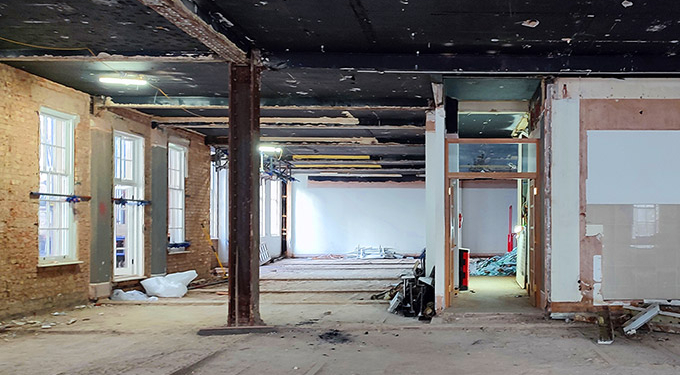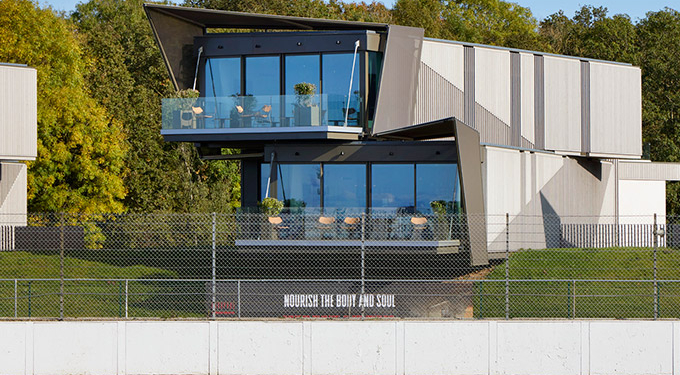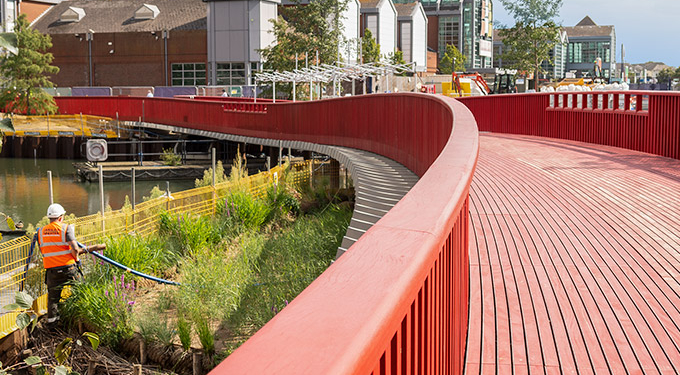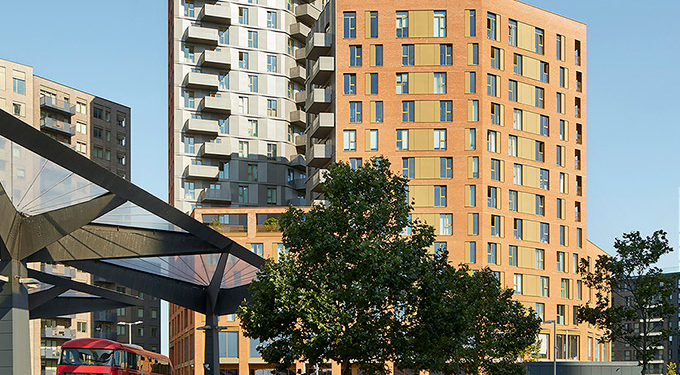Embodied carbon
For example, Whitby Wood specifies a lot of concrete, which is a wonderful and ubiquitous construction material. Unfortunately, it is causing approximately 10% of global carbon dioxide emissions, predominantly through the production of one of its key constituents — cement.
So what do we do?
The magnitude of the problem is so large and we as individuals are so small that most of us — understandably — become like ostriches and stick our heads in the sand: “It’s a global problem and there’s no point doing anything unless the US and China do too” … “We do carbon offsetting so emerging economies don’t do what we do” … ”We can only do what our clients accept/understand/are willing to pay for” … and so on.
A good way to start is to admit the reality of the situation: this is huge. This is scary. This cannot be solved by any one person, business, organisation or country. At the same time, this is an emergency, and so business-as-usual, or a gently-gently approach, won’t cut it. We can, and must, start now.
Although we aren’t going to reach zero carbon tomorrow, and consequently most buildings we are working on right now won’t be zero carbon, it’s not that they can’t be, it’s just that we don’t have all the answers yet. We need more time, and real effort, to work them out. Luckily, we can create more time if we act big and fast.
Let’s apply some good old engineering-based maths and pragmatism, and understand the problem. CO2e hangs around for a very long time, and the atmosphere can only cope with a certain total volume of it if global temperatures aren’t to rise by higher than 1.5 °C (average). Humanity is emitting CO2e all over the place — including as a result of our structures — and we need to slow down these emissions pretty quickly so we don’t exceed the amount the atmosphere can cope with.
The speed of the slowdown required is neatly set out on the IEA website with a summary of what world CO2e emissions cannot exceed per year by certain points, starting now: 2020 33.9GT CO2e, 2025 30.2GT CO2e (11% reduction), 2030 21.1GT CO2e (38% reduction), 2035 12.8GT CO2e (62% reduction), 2040 6.3GT CO2e (81% reduction), 2045 2.5GT CO2e (93% reduction), 2050 0GT CO2e (all done – 100%).
If you multiply these amounts by the number of years you get a total CO2e budget that we can’t exceed, between ALL of us. THIS IS IMPORTANT, because if we slow the rate down faster it actually gives us more time to get to zero, so early wins, particularly big early wins, make a compound difference.
So to be clear, a BIG reduction in carbon emissions on the project you are working on RIGHT NOW, makes a HUGE difference to the race to zero.
Before we can move forward, we need to understand where we are now. For Whitby Wood, this means measuring the embodied carbon of the structural frames we are working on today. We record these figures, and we are starting to make them public.
The aim of gathering and sharing this data is to build an understanding of embodied carbon and encourage conversation and debate. We have not massaged our figures or used opaque methods to artificially reduce them, but have based them on straightforward calculations using commonly available data. The purpose of this exercise is not to make us look good but to help inform an important conversation around embodied carbon and how we eliminate it.
As explained in the column at left, increasingly the focus is on the impact of embodied carbon rather than operational carbon. So, how are these figures calculated?
CALCULATING EMBODIED CARBON
Embodied carbon figures account for emissions at each stage of a material’s journey to the finished outcome — including extraction, processing, manufacture and assembly — and represent the total impact of the structure on global warming. We use data from the Inventory of Carbon & Energy version 3 (ICEv3) database3 for our calculations, and we treat them as ball-park figures. They provide a good basis for comparing the relative impact of different structural frame options.
To calculate the embodied carbon we also need to know the quantities of each material used in each frame. All our projects are modelled in 3D and elements are categorised according to system type and material, such as concrete foundations. We extract quantity data for each structural system and multiply with the corresponding embodied carbon figures from the ICE database to produce a total embodied carbon figure for that project.
We are increasingly listing carbon dioxide equivalent (CO2e) figures as part of the standard project data included on project pages, along with quantities of the main materials. Using CO2e figures means that data is comparable between disparate projects based on contribution to global warming.
Whitby Wood has set emissions reduction targets through the Science Based Targets initiative, with levels required to meet the goals of the Paris Agreement.
SBTi dashboard : sciencebasedtargets.org

Route to zero : OUR UK TARGETS HAVE BEEN VALIDATED
REFERENCES
1 … UK Green Building Council, Tackling embodied carbon in buildings, February 2015
2 … UK Green Building Council, www.ukgbc.org/climate-change
3 … ICE database, www.circularecology.com






